Tattoo Studio Checklist: Safety and Hygiene for the Artist’s Workplace

Getting a tattoo is an exciting experience, but ensuring safety should always come first. A professional tattoo studio must follow strict hygiene standards to protect clients from potential health risks.
This checklist outlines the essential safety and hygiene practices every studio should follow — from workspace sanitation to equipment sterilization — helping clients enjoy a safe and professional tattoo experience
Importance of hygiene in tattoo studios
Understanding tattoo hygiene
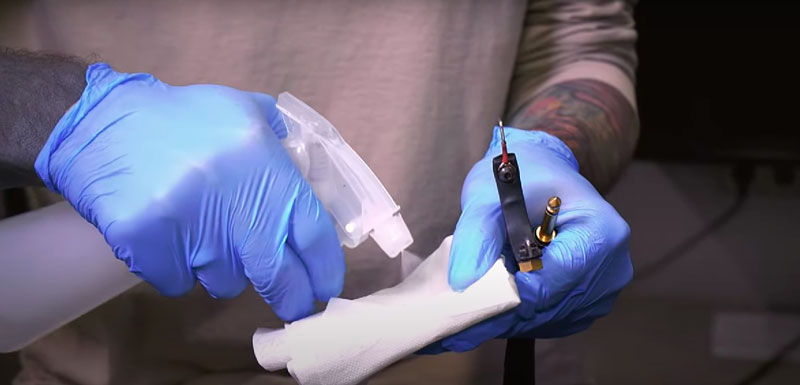
Tattoo hygiene is crucial for preventing infections and ensuring the well-being of clients. A professional tattooist understands the importance of hygiene and follows strict protocols to maintain a sterile environment. This includes thorough hand hygiene, using antibacterial soap and antiseptic solutions, and wearing protective gear like gloves. Ensuring each tattoo artist adheres to these essential hygiene measures significantly reduces the risk of infection. Proper sanitation of the tattoo area and tools plays a vital role in minimizing exposure to pathogens and promoting a safe tattoo experience. The tattoo studio must prioritize sterilization.
Consequences of poor hygiene practices
Poor hygiene practices in a tattoo shop can lead to severe health consequences. Without proper sterilization and disinfection, there is a high risk of infection from blood-borne pathogens such as hepatitis. Cross-contamination can occur if tools are not properly sterilized between clients, or if the tattooist fails to wash their hands consistently. Neglecting to maintain a hygienic workstation can expose clients to harmful bacteria and increase the risk of serious infections. The importance of hygiene cannot be overstated, as neglecting these measures can result in serious and long-lasting health problems for those getting a tattoo.
Regulations and standards for tattoo shops
Regulation of tattoo shops varies depending on the location, but most health departments have safety standards in place to protect the public. These regulations often require tattoo businesses to obtain permits and undergo regular inspections. Hygiene standards typically cover aspects such as equipment sterilization using an autoclave, proper waste disposal, and the use of disposable materials. Tattoo artists may also be required to complete training courses on blood-borne pathogens and hygiene practices. By enforcing these protection and sanitation measures, authorities aim to ensure that tattoos are performed in a safe and hygienic environment, minimizing the risk of infection. It is crucial that the tattoo studio complies with the set hygiene standards.
Professional tattooist know that precision starts with sanitation. The Avenger 2 Pro Series and Avenger 3 Pro Series deliver unmatched control when used in a sterile, well-prepared workspace, while the Ultron 4 Pro Series stands as a symbol of artistry and immaculate discipline in every studio.
Essential hygiene practices for tattoo artist's workplace
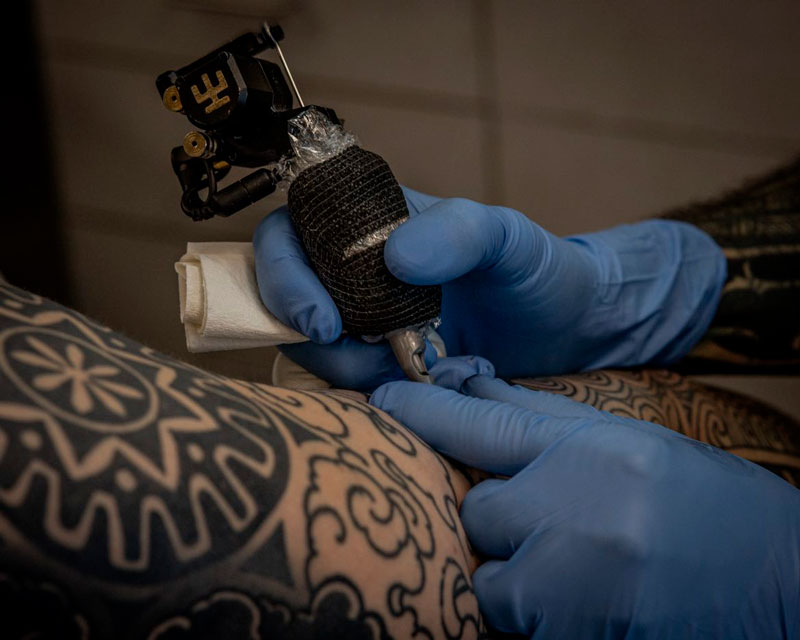
Personal hygiene protocols
Maintaining personal hygiene is paramount for every tattoo artist in a tattoo studio, as it directly impacts the protection and sanitation of the workspace and clients. A comprehensive tattoo hygiene protocol should include daily showering, wearing clean clothes, and keeping hair neatly tied back to prevent cross-contamination. Tattoo artists must also maintain short, clean nails to minimize the risk of infection and ensure hygienic handling of tattoo machines and supplies. Avoiding strong perfumes or scented lotions is advisable, as these can cause allergic reactions in sensitive clients. The importance of hygiene when getting a tattoo starts with the artist themselves, ensuring they present a clean and safe image. Personal responsibility complements the studio hygiene standards and contributes to a safer, more sterile environment.
Hand hygiene techniques for tattoo artists
Hygiene is key in a tattoo studio. Every tattooist must wash their hands thoroughly with antibacterial soap and water before and after tattoo procedure, as well as after any break or contact with potentially contaminated surfaces. The correct technique involves wetting hands, applying soap, lathering for at least 20 seconds, rinsing thoroughly, and drying with paper towels. An antiseptic hand rub should also be used as an additional measure to further disinfect the hands. Proper wash your hands to reduce the risk of infection and cross-contamination, ensuring a safer experience for both the tattooist and the client. Regularly sanitize your hands.
Use of personal protective equipment (PPE)
The consistent use of personal protective equipment (PPE) is an indispensable component of hygiene and safety in each tattoo shop. Tattoo artists must always wear gloves, using single-use, disposable nitrile gloves that are changed between clients and after any break in the sterile field. A protective apron or gown should be worn to prevent cross-contamination of clothing. Eye protection, such as safety glasses or a face shield, is recommended to guard against splashes of blood or other bodily fluids. PPE acts as a barrier, minimizing the risk of infection and protecting both the tattooist and the client from blood-borne pathogens like hepatitis. Properly dispose of used PPE in designated waste disposal containers.
Sanitation and sterilization of equipment
Overview of sterilization methods
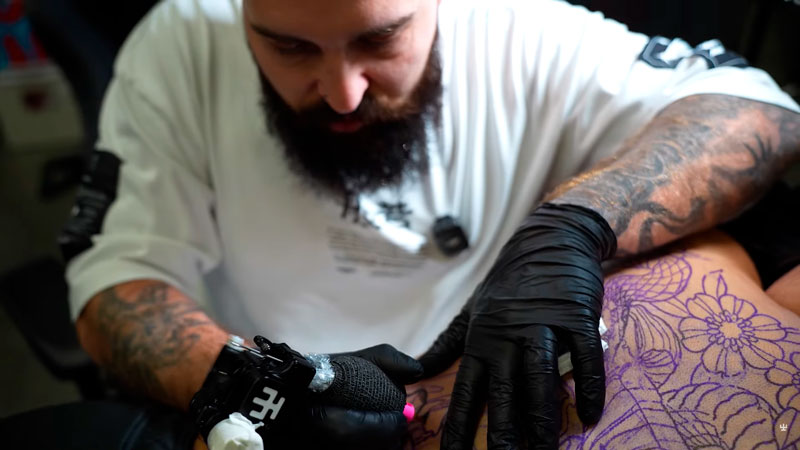
Sterilization methods are vital in a tattoo studio to ensure workplace sterilization, preventing the spread of pathogens. The autoclave, which uses high-pressure steam, is the gold standard for sterilizing reusable tools. Surfaces and items that cannot withstand heat should be cleaned with hospital-grade disinfectants, such as hospital-grade solutions. They can be used for surfaces and equipment that cannot withstand high temperatures. Sanitation protocols should include thorough cleaning before sterilizing, as organic matter can interfere with the process. Regular inspection of sterilization equipment and processes is essential to verify their effectiveness. The tattoo artist has to be hygienic at all times.
Importance of using disposable materials
The use of disposable materials plays a crucial role in maintaining sanitation and safety within a tattoo studio. Single-use needles, tubes, and ink caps eliminate the risk of infection associated with reusable items, which may not be adequately sterilized. Utilizing disposable barriers, such as covers for chairs and work surfaces, prevents cross-contamination. Every tattooist should prioritize disposable products to minimize the transfer of blood-borne pathogens like hepatitis. Proper waste disposal of disposable materials is also essential, requiring puncture-proof containers for sharps and biohazard bags for contaminated items. Adhering to these practices when making tattoo ensures a safer environment for both the tattooist and clients getting a tattoo, reinforcing the importance of sanitation.
Once proper hygiene and sterilization are in place, you can safely move on to setting up your tattoo machine. Read the full guide on how to set up a tattoo machine safely and effectively.
Maintaining a sterile tattoo station
Maintaining a sterile tattoo station is paramount in preventing cross-contamination and ensuring sanitary conditions in a tattoo shop. Before each tattoo, the workspace should be thoroughly cleaned and disinfected with a disinfectant solution. All surfaces that the tattoo artist might touch should be covered with protective, single-use barriers. Equipment should be arranged in a manner that minimizes the risk of infection during the procedure. During the tattoo process, the tattooist should consistently sanitize their hands and wear gloves to maintain a hygienic environment. After completing a tattoo, all disposable materials must be properly bagged for waste disposal. This comprehensive tattoo health standards ensures that the tattoo area remains sterile, reducing the risk of pathogen transmission and promoting client safety. The clean environment is key for a professional tattoo.
Inspection Protocols for tattoo studios
Regular inspections and audits
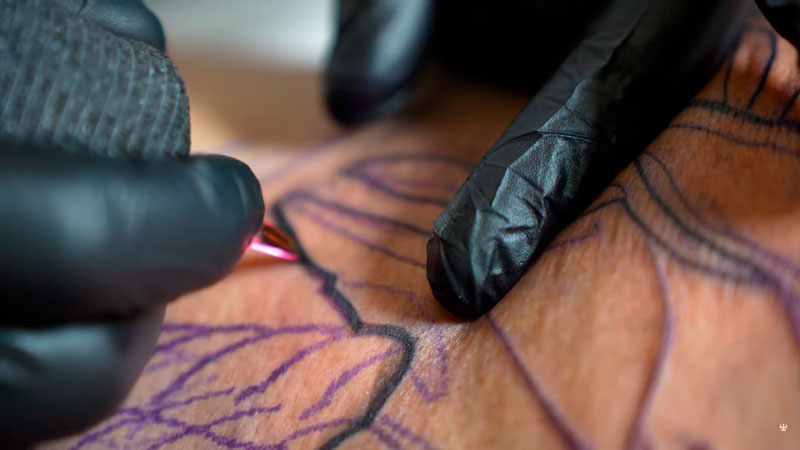
Regular audits are critical for upholding health standards in any tattoo studio. These assessments, conducted by local health authorities or certified professionals, evaluate workspace cleanliness, equipment sterilization, and compliance with safety protocols. A thorough inspection involves evaluating the neatness of the workspace, the effectiveness of sterilization equipment like the autoclave, and adherence to hand hygiene protocols. The examination also verifies that disposable materials are used appropriately and that waste disposal methods meet sanitary requirements. Following examination, a detailed report should outline areas for improvement, ensuring the tattoo shop maintains a hygienic environment and minimizes the risk of infection for clients getting a tattoo. Each tattoo parlour should take the examinings seriously.
Checklist for studio hygiene compliance
A comprehensive checklist is an invaluable tool for maintaining studio hygiene compliance in a tattoo studio. The checklist should include verification of equipment sterilization using an autoclave, confirming that the tattoo workspace is thoroughly cleaned and disinfected with disinfectant solution before tattoo. Ensure every tattooist follows hand health standards protocols, including techniques and the consistent wearing of gloves. The checklist should also cover the correct disposal of single-use, disposable items and proper waste disposal practices. Regular check-ups of tattoo machines, along with verification of aftercare instructions provided to clients, are essential. By consistently adhering to this checklist, a tattoo shop ensures safety and sanitation, minimizing the risk of infection. The checklist has to be followed every day to ensure the neatness of the tattoo area.
Protocol for managing cross-contamination risks
Implementing a robust protocol for managing cross-contamination risks is essential to prevent the spread of pathogens in a tattoo studio. This protocol should emphasize the use of disposable materials whenever possible, such as needles, ink caps, and protective barriers for surfaces. Tattoo artists must consistently sanitize their hands, wash their hands, and wear gloves during tattoo procedure. Equipment that cannot be disposable must be thoroughly sterilized using an autoclave, and the sterilization process should be regularly monitored. The workspace should be disinfected with an antimicrobial solution, and measures should be taken to prevent contact between clean and contaminated items. Aftercare instructions should educate clients on how to prevent infection. By adhering to these practices and maintaining a sterile environment, the tattoo shop can significantly reduce the risk of infection and ensure client safety and sanitation when getting a tattoo.

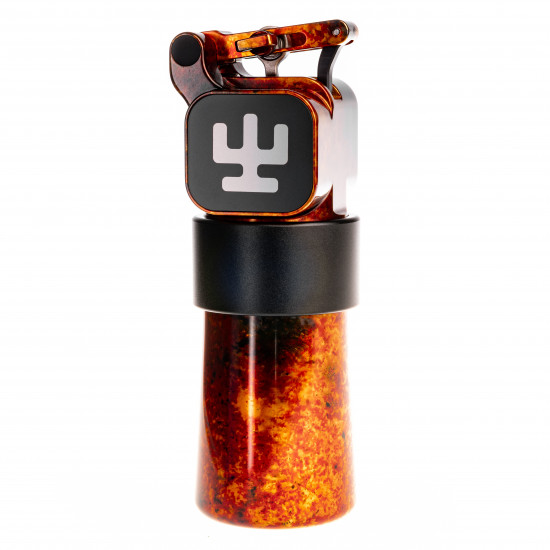 Ultron 4 Pro Firestarter
Ultron 4 Pro Firestarter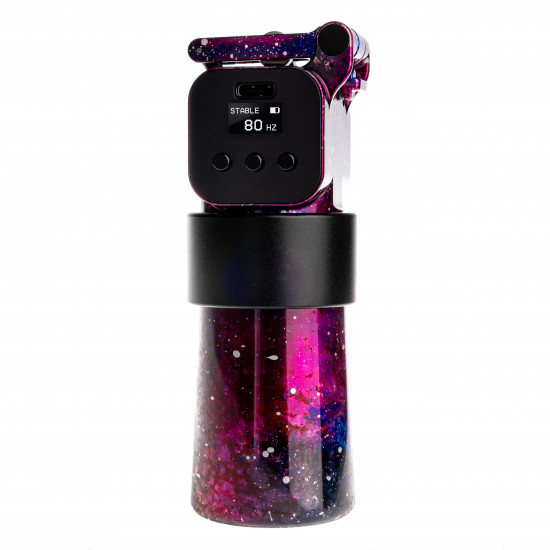 Ultron 4 Pro Space
Ultron 4 Pro Space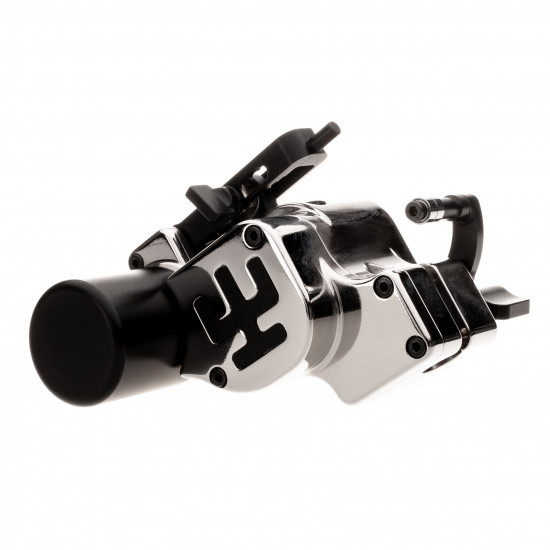 Avenger 3 Pro Nickel
Avenger 3 Pro Nickel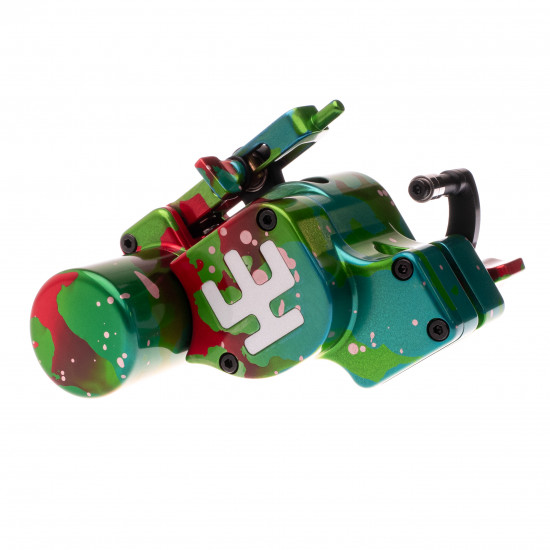 Avenger 3 Pro Mushroom Trip
Avenger 3 Pro Mushroom Trip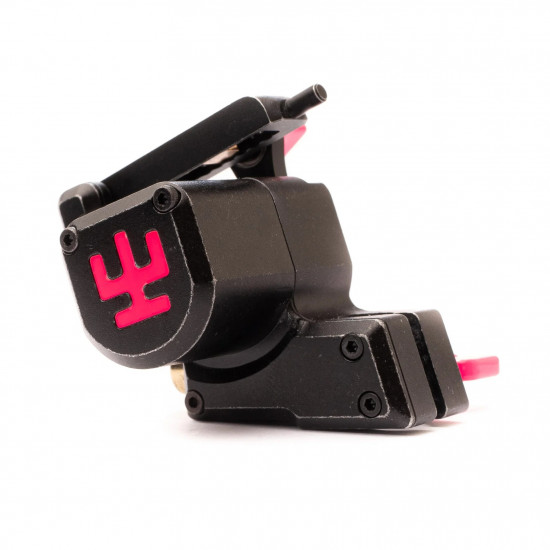 Avenger 2 Pro Neon Pink
Avenger 2 Pro Neon Pink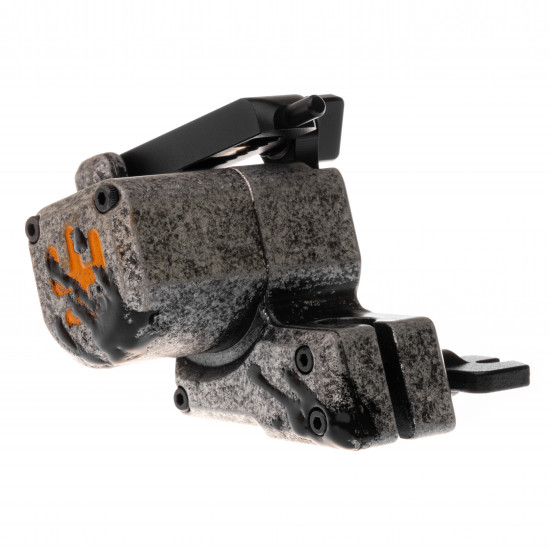 Avenger 2 Pro Old Petroleum
Avenger 2 Pro Old Petroleum